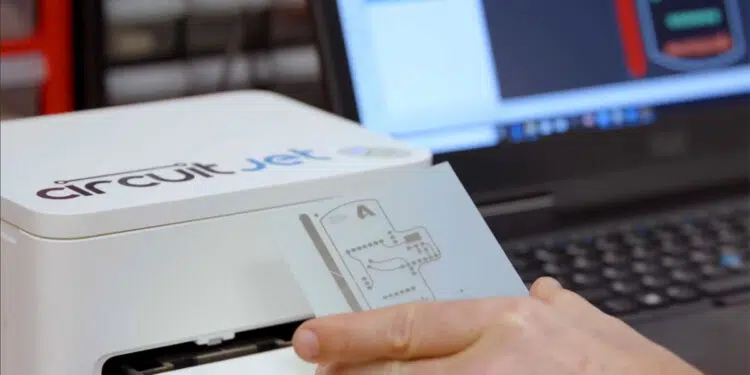Electroninks expands line of particle-free conductive inks with new gold and platinum formulations. Broader selection of metals fuels innovation in product development and provides greater flexibility in manufacturing.
Electroninks, the leader in particle-free conductive metal inks and advanced materials, announced the addition of gold (Au) and platinum (Pt) particle-free conductive inks to its catalog of products. The addition of gold and platinum inks gives makers of consumer electronics, medical devices, sensors and semiconductors the ability to make lighter, less expensive, and more environmentally friendly products.
The demand for powerful microelectronics packed into consumer and industrial products of different shapes and sizes has never been greater. From foldable displays in new 5G phones to medical sensors in athletic wear to new materials and architecture in semiconductor packaging, powerful tiny circuitry is making it possible, and Electroninks’ broader line of conductive inks is enabling greater innovation in this field.
Electroninks has already established a superior particle-free ink in the market with its conductive silver ink. The new gold and platinum metal inks consist of metal-organic precursors that decompose cleanly at lower temperatures than nanoparticle inks and can be UV-cured. The inks are unique to the market, providing deep savings on material use (and waste) and costs for customers by enabling similar electrical and reliability properties of vacuum or plated films of gold and platinum.
Opening additional doors in product manufacturing, the new inks are catalytically active (may serve as a seed layer) and have a high corrosion resistance — ideal for protective circuits, gas, thermal and biological sensors. Unlike traditional gold and platinum inks that are based on metal nanoparticles dispersed with organics/polymers which degrades performance, Electroninks’ particle-free inks enable reliable printing and manufacturing in non-typical and even space-like environments for its aerospace and defense customers.
The Particle-Free Difference
Electroninks has developed particle-free inks to provide the markets with a material that can withstand high temperatures and humidity, making them ideal for use in an increasing variety of applications. With the excellent reliability of the material combined with iso-certified manufacturing, Electroninks is the only company to deliver this level of quality and performance from gold and platinum materials. The company aims to be the main supplier of true high-volume manufacturing particle-free metal complex inks on the market. These inks are a direct replacement for nanoparticle inks, metal paste, and sputtered or deposited metals.
Electroninks’ inks resulting films are stretchable, highly reflective, RoHS compliant, catalytically active, and antimicrobial, allowing developers to utilize multi-hour printing to produce products showcasing extreme detail. Particle-free inks also have a longer shelf-life than nanoparticle solutions because traditional binders and surfactants are not used in Electroninks’ metallo-organic inks. Electroninks inks are free from impurities – approaching 99.99% metal in resulting films, providing superior environmental stability and reliability.
Due to the superior conductivity that Electroninks’ particle-free inks offer, the same device performance can be achieved by using much less material at a fraction of the regular production costs. The high prices of gold, platinum and other precious metals have limited their widespread use in the advanced manufacturing industry. Electroninks’ particle-free inks are able to reduce prices without sacrificing quality, which can have a broad impact on the overall conductive precious metals market and their sustainable usage.































